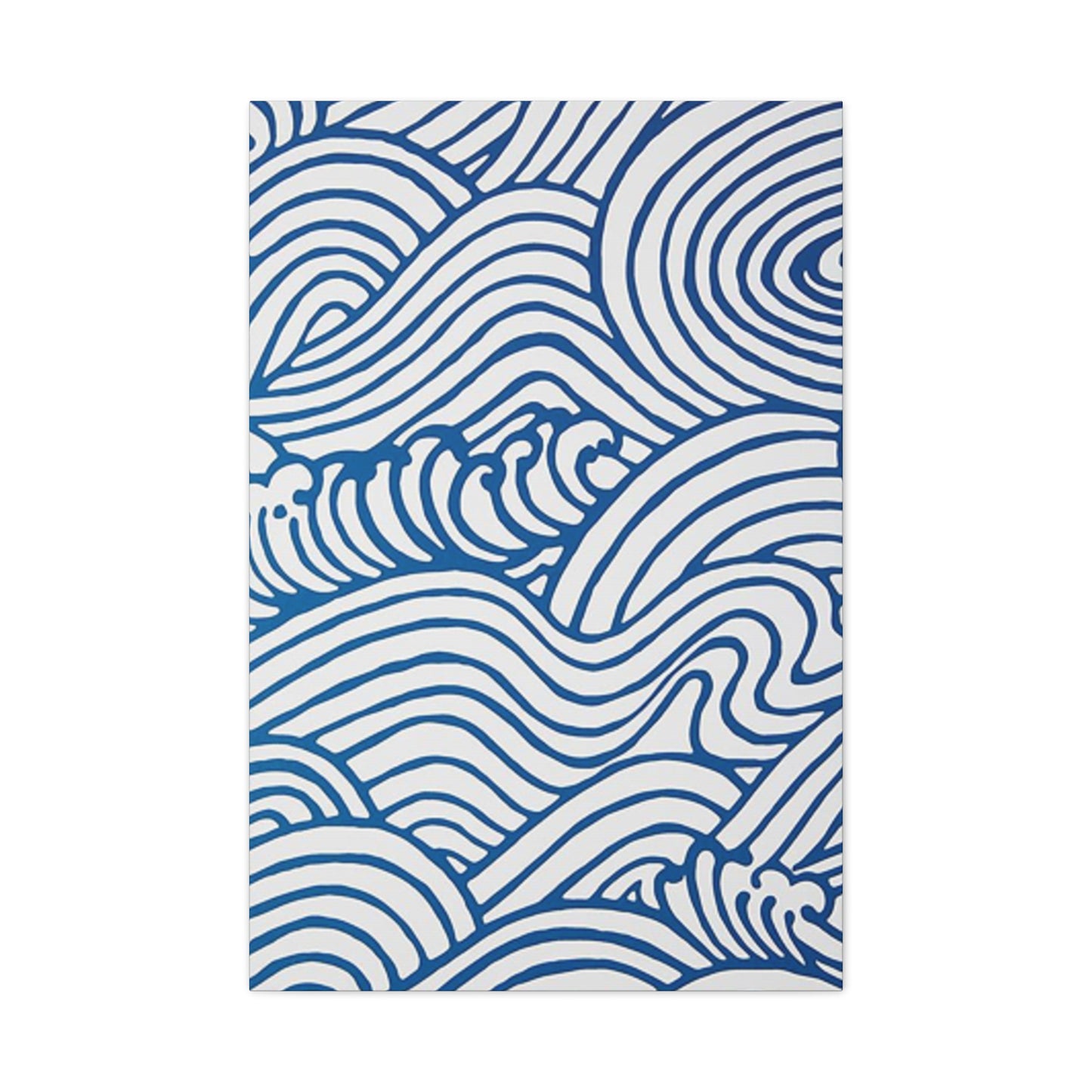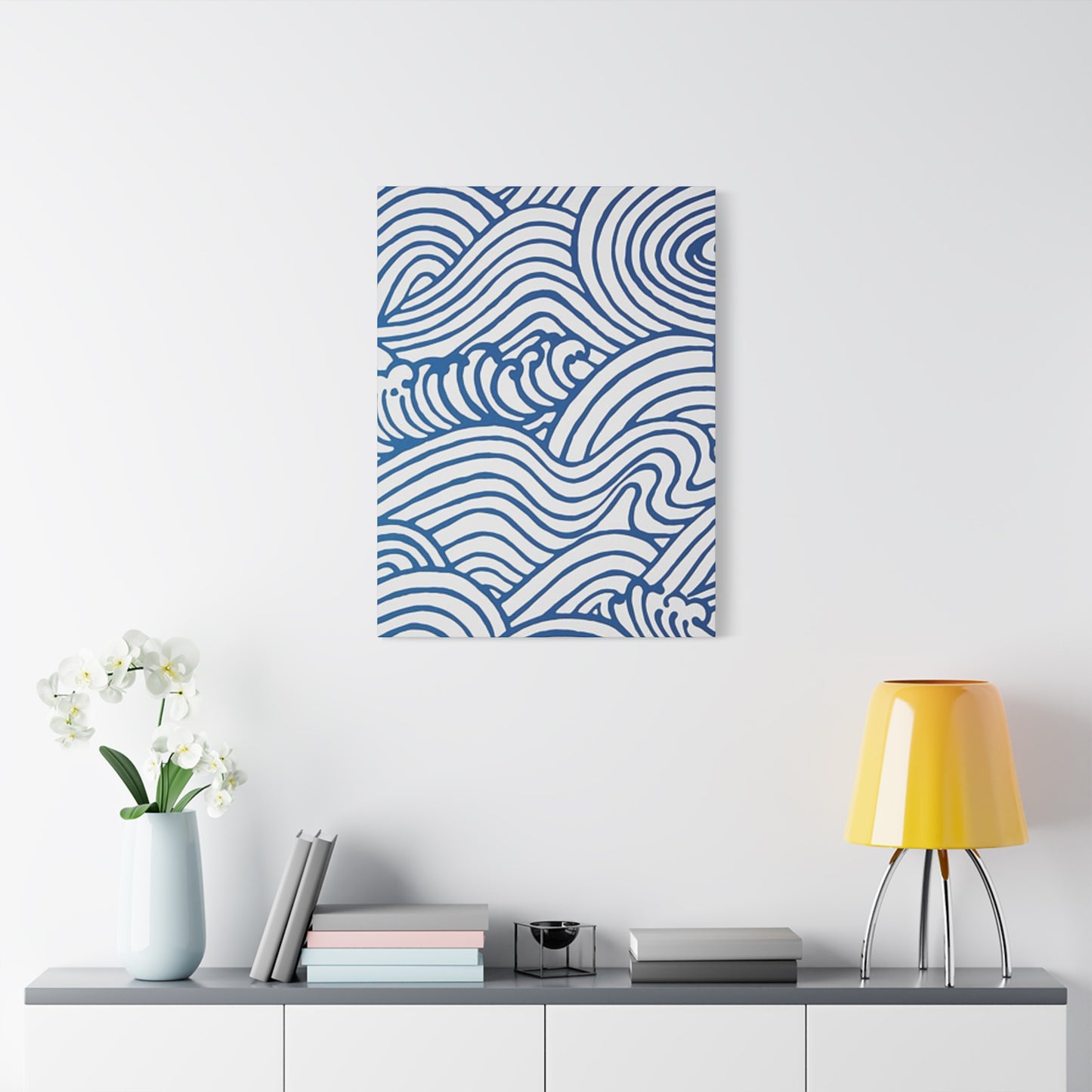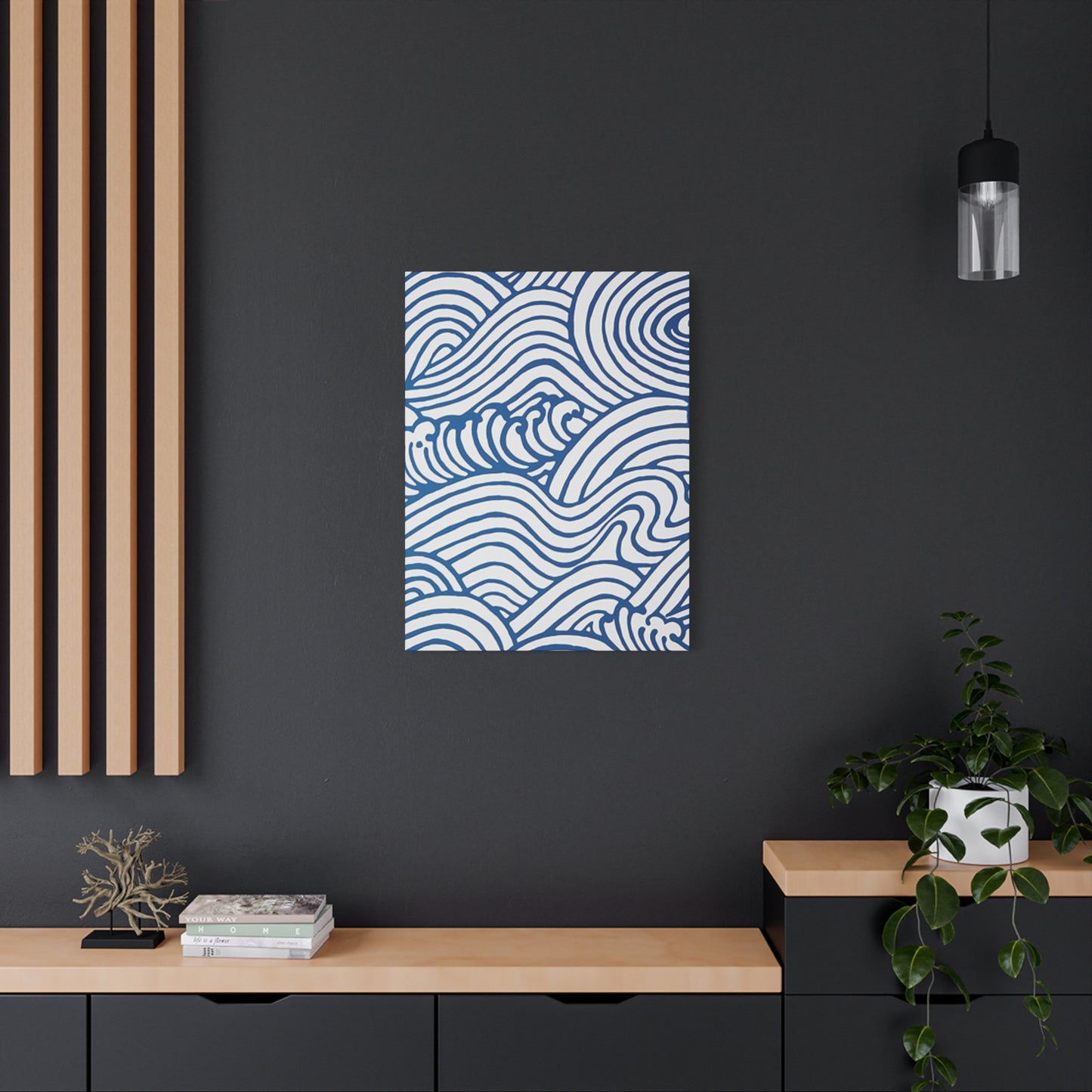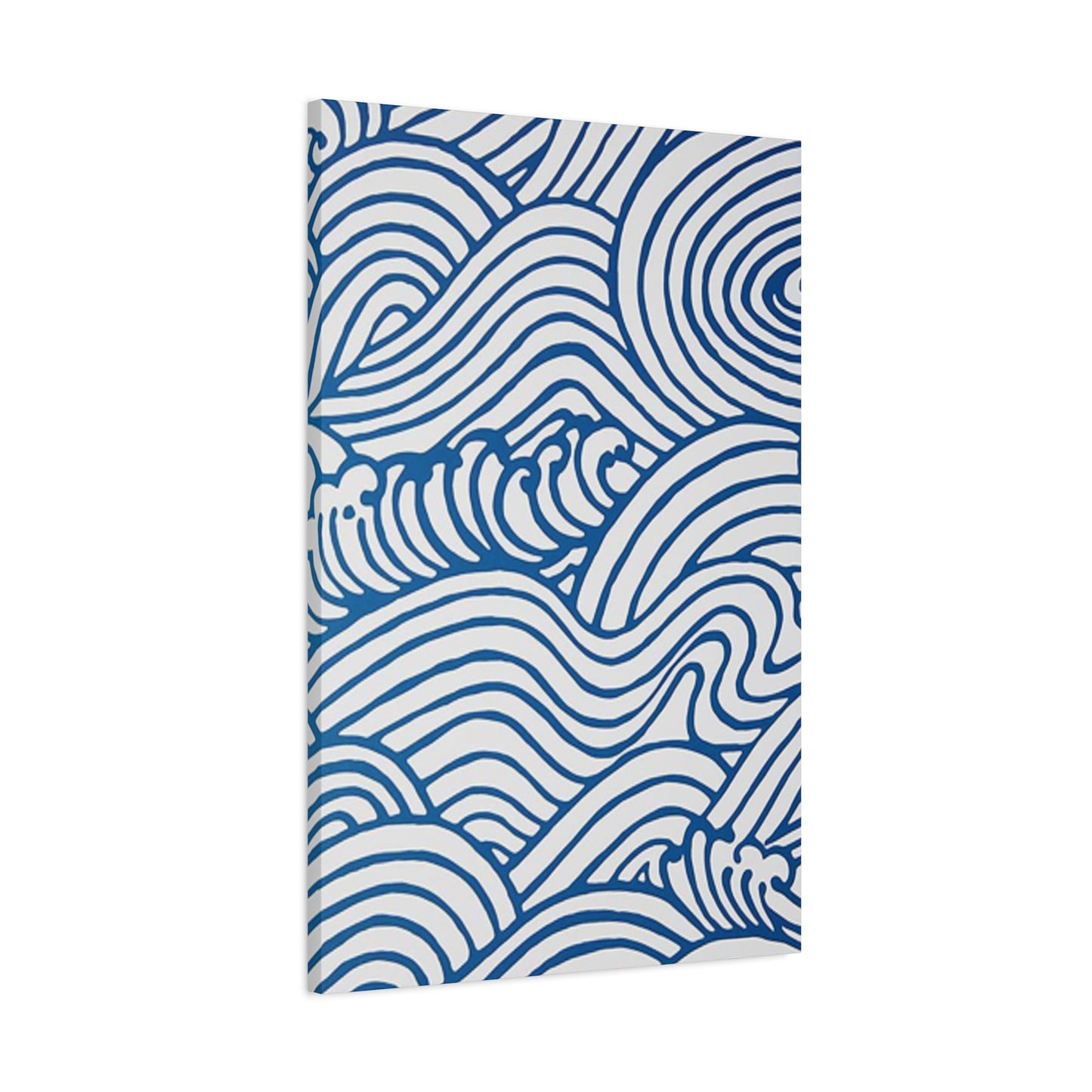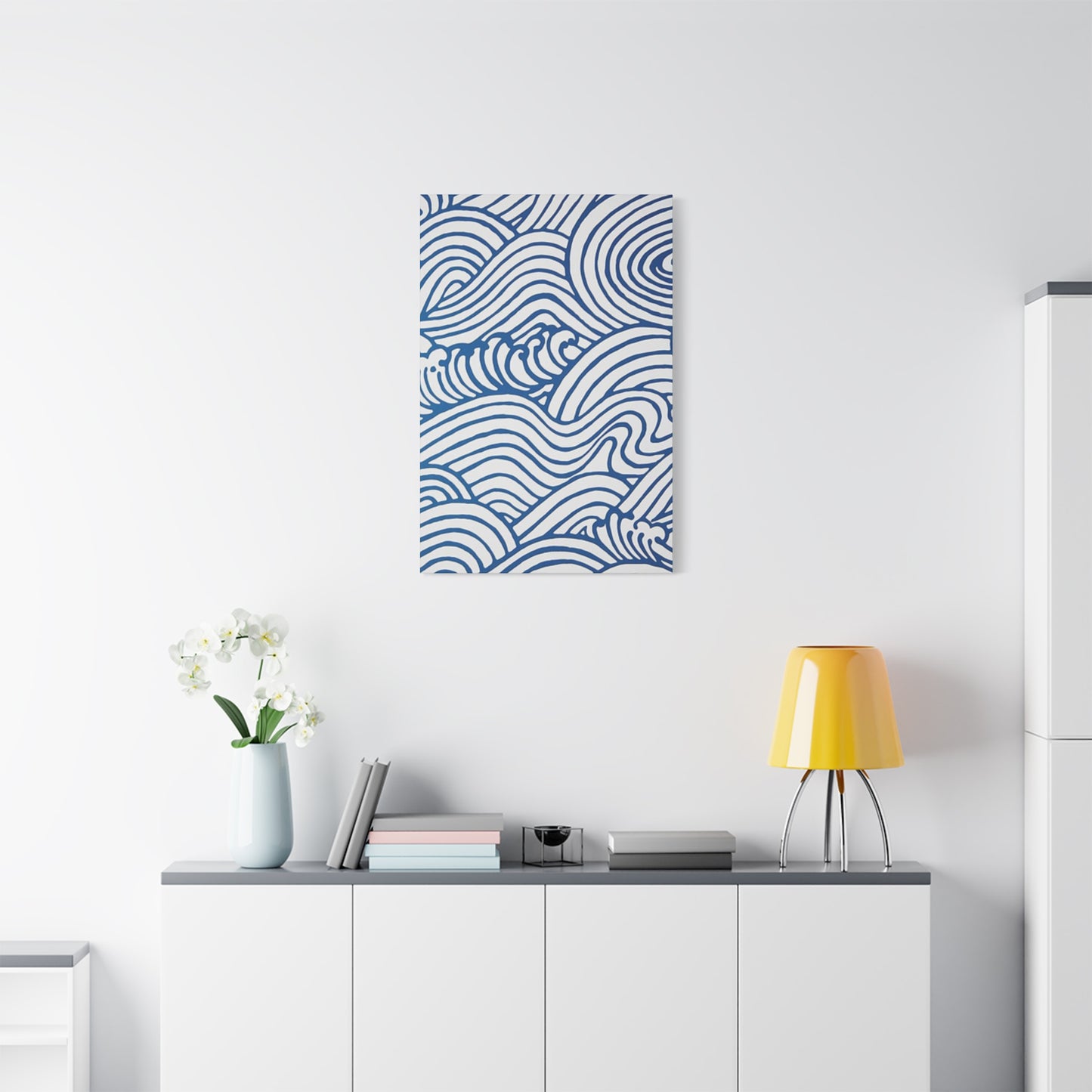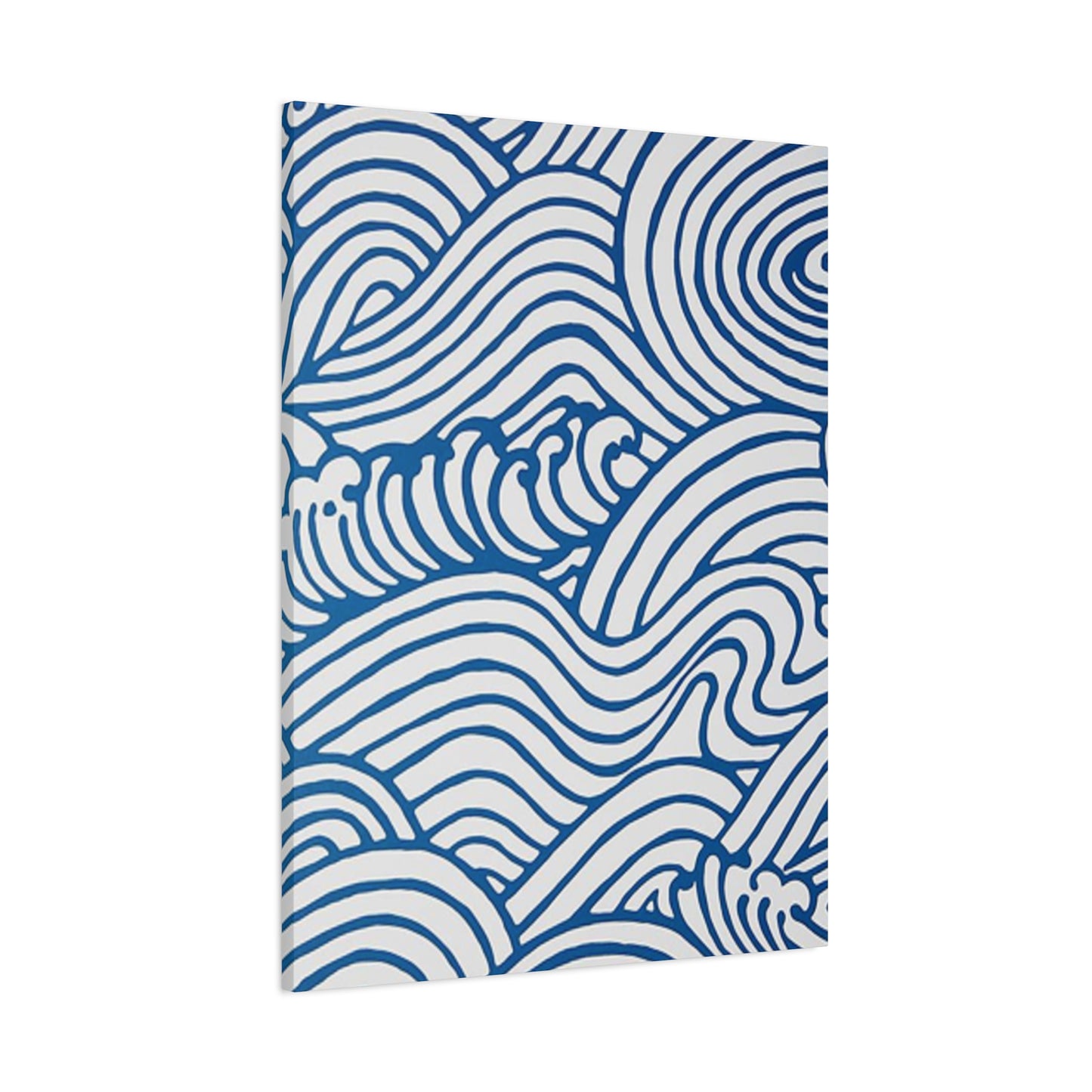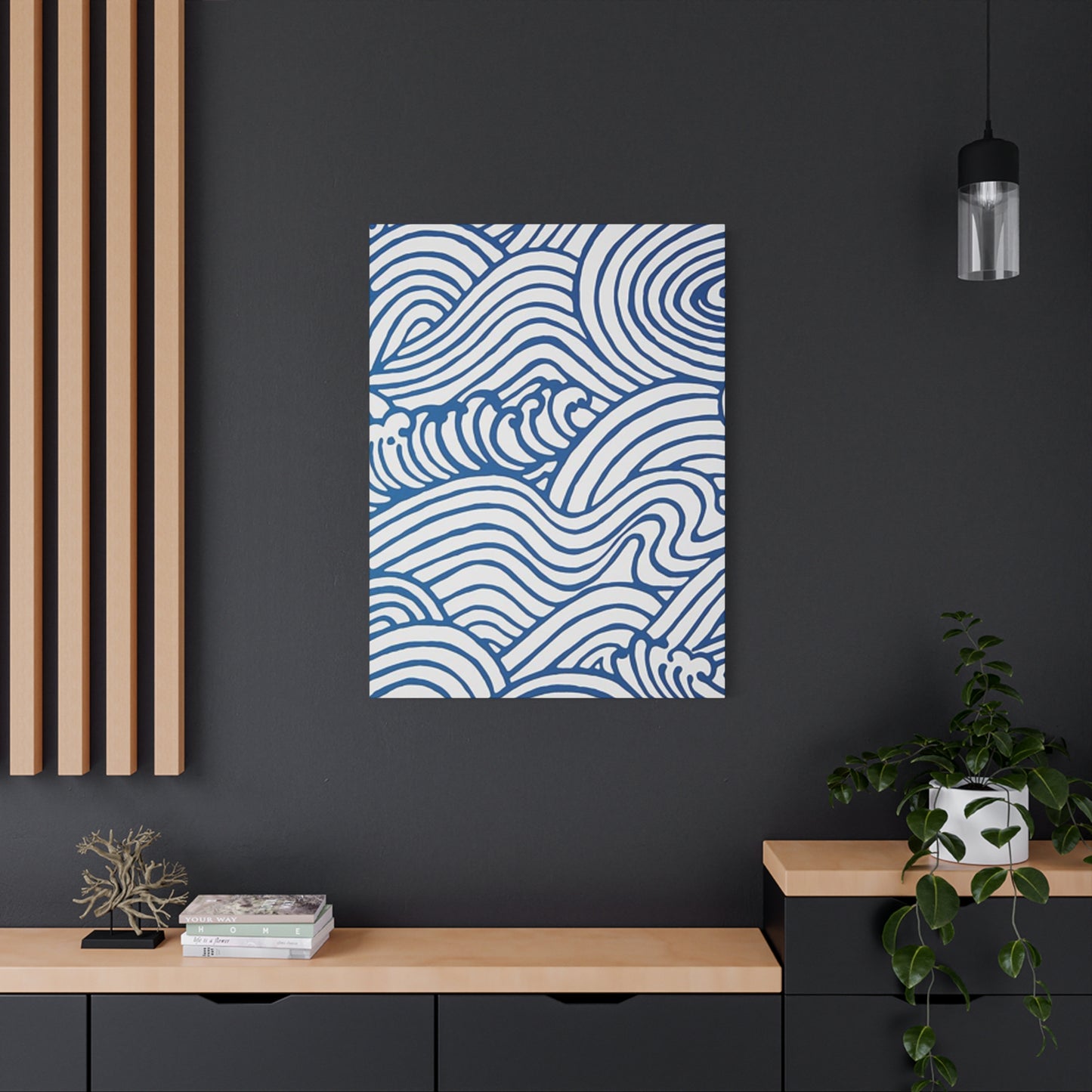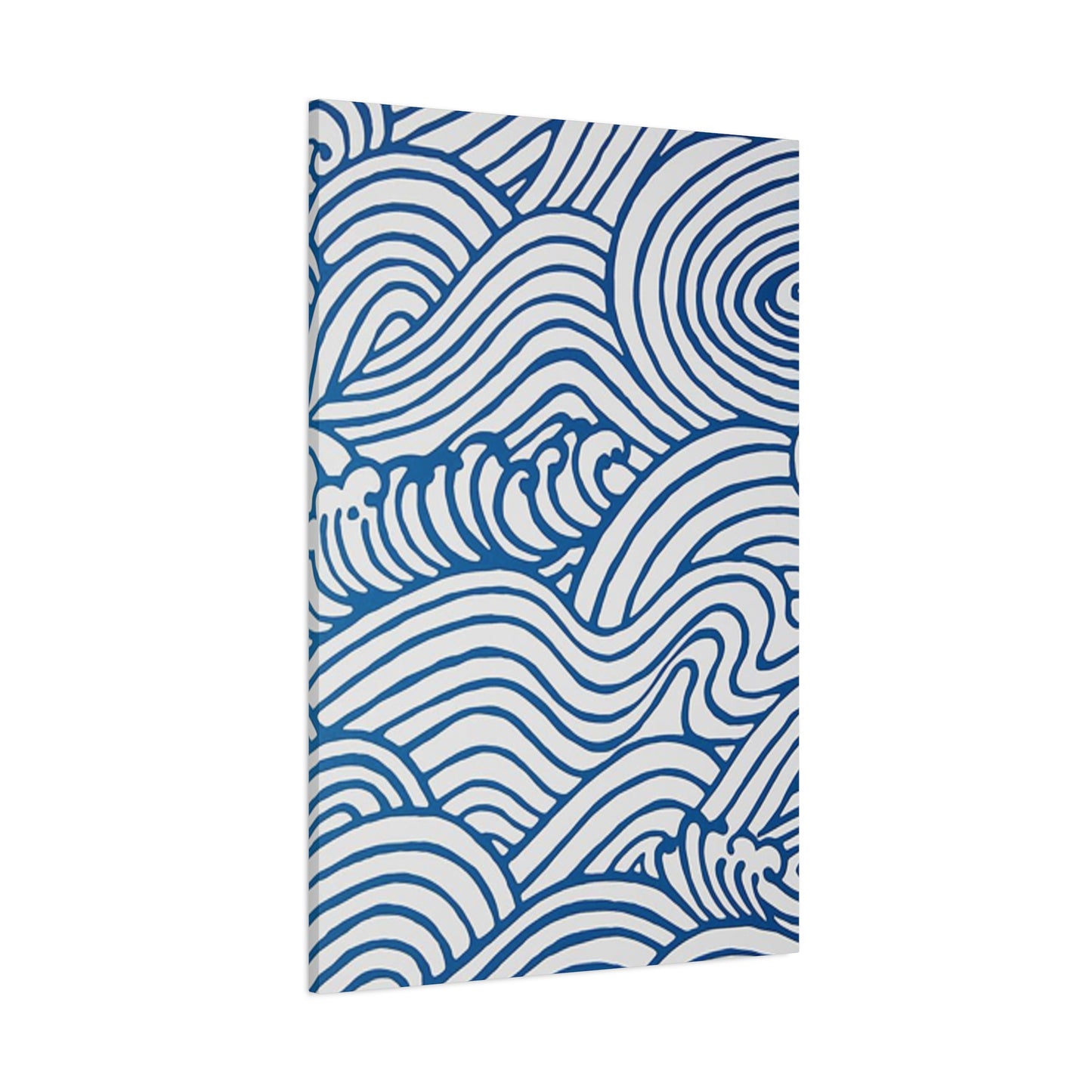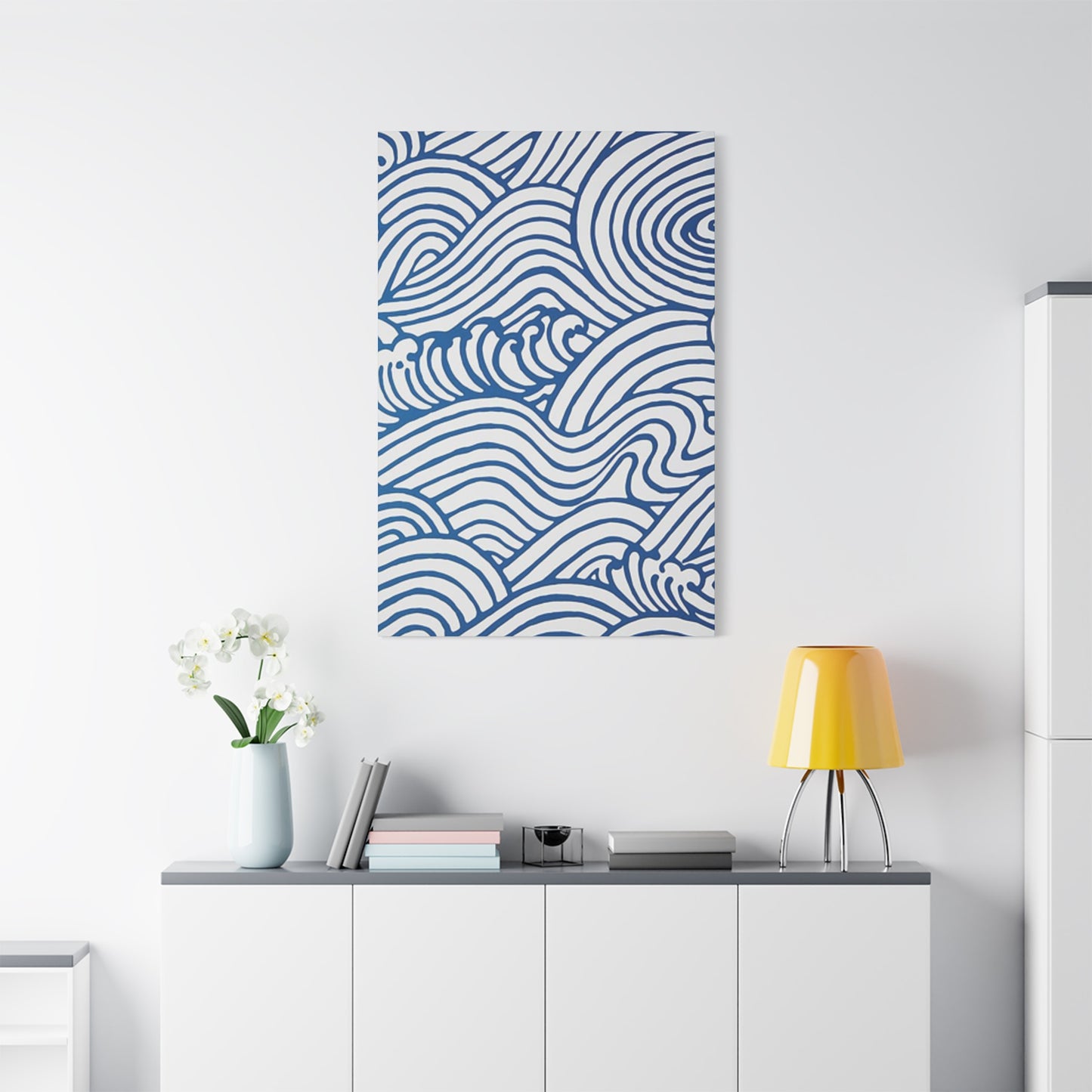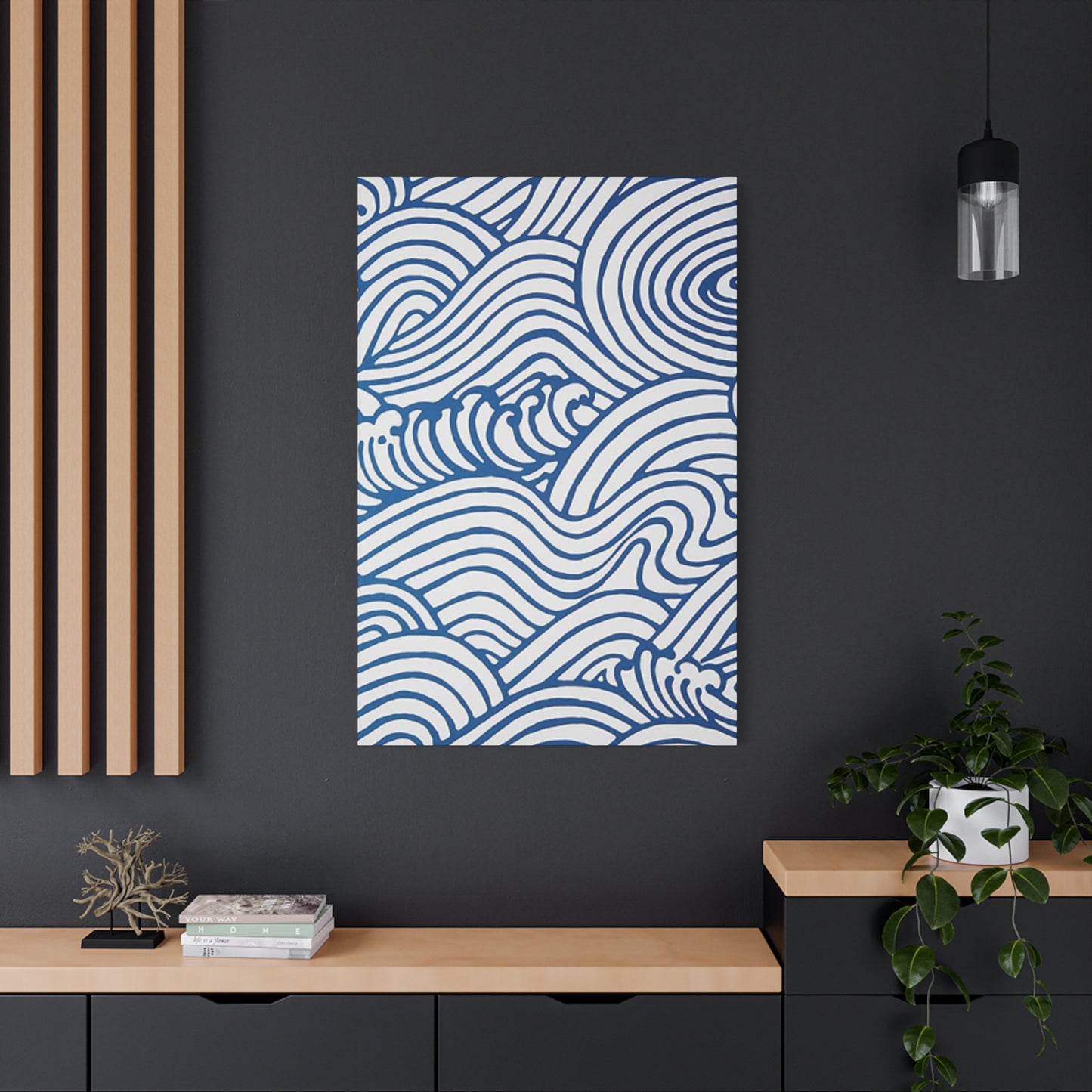Captivating Blue Wave drawing wall art: Creative Expressions of Ocean Beauty
The mesmerizing beauty of ocean waves has captivated artists for centuries, inspiring countless masterpieces that celebrate the fluid dynamics and ethereal charm of water in motion. Blue wave artwork represents one of the most sought-after categories in contemporary interior design, offering viewers a chance to bring the tranquil essence of the sea into their living spaces. From abstract interpretations to realistic depictions, these artistic creations serve as windows to the ocean's soul, transforming ordinary walls into portals of serenity and wonder.
The appeal of blue wave art extends far beyond mere aesthetic pleasure. These pieces embody the therapeutic qualities of water, promoting relaxation and mental clarity while adding sophisticated elegance to any environment. Whether crafted through traditional painting techniques or modern digital artistry, blue wave compositions have the remarkable ability to evoke emotions ranging from peaceful contemplation to invigorating energy, making them perfect additions to homes, offices, and commercial spaces alike.
Blue Wave Flow Wall Art: Capturing Movement in Static Form
Blue wave flow wall art represents the pinnacle of artistic expression when depicting water's natural movement patterns. These sophisticated pieces showcase the artist's ability to freeze motion in time, creating visual narratives that speak to our deepest connections with nature's rhythms. The flowing characteristics of ocean waves translate beautifully onto canvas, paper, and digital mediums, offering viewers an immersive experience that transcends traditional artistic boundaries.
The creation process of blue wave flow wall art requires exceptional skill in understanding fluid dynamics and color theory. Artists must master the delicate balance between representing realistic water movement and maintaining artistic interpretation that resonates with contemporary audiences. The interplay of light and shadow across wave surfaces creates depth and dimension that draws viewers into the artwork, establishing an emotional connection that goes beyond visual appreciation.
Professional artists specializing in blue wave flow wall art often study oceanography and marine science to accurately capture the essence of wave behavior. This scientific approach, combined with artistic intuition, results in pieces that feel authentically oceanic while maintaining the creative freedom necessary for compelling artistic expression. The most successful examples of this art form demonstrate how technical precision can enhance rather than constrain artistic vision.
The color palette selection in blue wave flow wall art plays a crucial role in establishing mood and atmosphere. From deep navy blues reminiscent of ocean depths to light aqua tones suggesting shallow coastal waters, each shade contributes to the overall emotional impact of the piece. Artists carefully consider how different blue variations interact with complementary colors, creating harmonious compositions that enhance the natural beauty of wave formations.
Contemporary blue wave flow wall art often incorporates mixed media elements, combining traditional painting techniques with modern materials like metallic accents or textured substances. These innovative approaches add tactile qualities that mirror the physical sensations of ocean water, creating multi-dimensional experiences that engage multiple senses simultaneously. The result is artwork that not only looks impressive but also invites physical interaction and closer examination.
The placement and lighting considerations for blue wave flow wall art significantly impact its visual effectiveness. These pieces often benefit from strategic lighting that mimics natural sunlight filtering through water, enhancing the illusion of movement and depth. Interior designers frequently recommend positioning such artwork where natural light can interact with the painted surfaces throughout the day, creating an ever-changing display that mirrors the dynamic nature of actual ocean waves.
Ocean Breeze Blue Waves: Embracing Coastal Serenity
Ocean breeze blue waves artwork captures the gentle, rhythmic motion of water influenced by coastal winds, creating compositions that embody tranquility and natural harmony. These pieces typically feature softer color transitions and more subtle movement patterns compared to dramatic storm-inspired wave art, making them ideal for spaces where relaxation and peace are primary objectives. The artistic challenge lies in conveying the ephemeral quality of wind-touched water while maintaining visual interest and emotional resonance.
The inspiration for ocean breeze blue waves often comes from direct observation of coastal environments during calm weather conditions. Artists frequently spend time at beaches, observing how gentle winds create surface ripples and small wave formations that catch and reflect light in unique ways. This observational approach ensures authenticity in the final artwork while allowing for creative interpretation that enhances the natural beauty of the subject matter.
Color gradation techniques play a fundamental role in creating convincing ocean breeze blue waves artwork. The subtle transitions between different shades of blue must appear natural and flowing, mimicking the way light penetrates water at various depths and angles. Master artists understand that the key to successful wave depiction lies not in dramatic contrast but in the nuanced handling of tone and hue that creates the illusion of transparent, moving water.
The emotional psychology behind ocean breeze blue waves artwork makes it particularly valuable in therapeutic and wellness environments. Healthcare facilities, meditation centers, and relaxation spaces often incorporate these pieces to promote healing and stress reduction. The gentle movement patterns and soothing color schemes have been shown to lower blood pressure and reduce anxiety levels, making this art form both aesthetically pleasing and functionally beneficial.
Technical execution of ocean breeze blue waves requires specialized brushwork techniques that can capture the delicate nature of wind-influenced water. Artists must master various stroke patterns that suggest movement without appearing forced or mechanical. The most effective pieces demonstrate a seamless blend of controlled technique and spontaneous expression, creating artwork that feels both carefully crafted and naturally occurring.
Digital artists working in the ocean breeze blue waves genre often utilize advanced software tools that can simulate natural water movement and light interaction. These technological approaches allow for precise control over wave patterns while maintaining organic appearance and feel. The combination of digital precision with artistic sensibility results in pieces that can be reproduced consistently while retaining the unique character of handcrafted artwork.
The cultural significance of ocean breeze blue waves artwork extends across many societies that have historical connections to maritime environments. These pieces often serve as reminders of humanity's deep relationship with the ocean, representing freedom, exploration, and the endless possibilities that water symbolizes in various cultural traditions. This universal appeal makes ocean breeze blue waves artwork suitable for diverse audiences and international markets.
Blue Wave Rhythm Canvas: Musical Movement in Visual Form
Blue wave rhythm canvas artwork transforms the mathematical patterns found in ocean waves into visual music, creating pieces that suggest sound and movement through color and form. These sophisticated compositions draw parallels between the rhythmic nature of wave patterns and musical compositions, offering viewers a synesthetic experience that engages both visual and auditory imagination. The artistic challenge involves translating temporal rhythms into static visual elements that maintain the dynamic energy of their inspiration.
The concept of rhythm in blue wave canvas art stems from the observation that ocean waves follow predictable patterns while maintaining individual character. Just as musical compositions combine structured elements with improvisational freedom, these artworks balance geometric precision with organic variation. Artists working in this genre must understand both wave physics and musical theory to create convincing visual representations of rhythmic water movement.
Color orchestration in blue wave rhythm canvas requires sophisticated understanding of how different hues can suggest tempo and mood. Lighter blues might represent higher frequencies or faster rhythms, while deeper tones could indicate bass notes or slower wave periods. The interplay between warm and cool blues creates harmonic relationships that mirror musical chord progressions, adding depth and complexity to the visual experience.
The compositional structure of blue wave rhythm canvas often follows musical forms such as sonata or symphony arrangements. Beginning with quiet introductory elements, building to dramatic crescendos, and resolving in peaceful conclusions, these artworks take viewers on emotional journeys similar to listening to well-composed music. This narrative approach makes blue wave rhythm canvas particularly engaging for extended viewing and contemplation.
Brushwork techniques used in creating blue wave rhythm canvas must convey both precision and spontaneity, much like skilled musical performance. Artists develop signature stroke patterns that become their visual vocabulary, similar to how musicians develop distinctive phrasing and articulation styles. The most successful pieces demonstrate technical mastery while maintaining expressive freedom that keeps the artwork feeling alive and dynamic.
Contemporary technology has opened new possibilities for blue wave rhythm canvas creation, with some artists using sound visualization software to translate actual ocean recordings into visual patterns. These scientifically-informed approaches create authentic rhythmic relationships while allowing for artistic interpretation and enhancement. The fusion of technology and traditional artistry produces unique pieces that could not exist through either approach alone.
The market appeal of blue wave rhythm canvas extends to music lovers, art collectors, and interior design enthusiasts who appreciate the sophisticated concept behind these pieces. These artworks often serve as conversation starters, inviting viewers to explore the connections between different artistic mediums and discover personal interpretations of the visual-musical relationships presented. This intellectual engagement adds value beyond mere aesthetic appreciation.
Wave Motion Blue Drawing: Capturing Dynamic Energy
Wave motion blue drawing represents one of the most challenging and rewarding aspects of marine-inspired artwork, requiring artists to suggest three-dimensional movement and energy using two-dimensional media. These pieces focus on the kinetic aspects of ocean waves, emphasizing the powerful forces and fluid dynamics that create the mesmerizing patterns we observe in nature. The artistic success of wave motion blue drawing depends on the artist's ability to make static lines and shapes appear to move and flow with convincing realism.
The fundamental challenge in wave motion blue drawing lies in understanding and representing the physics of water movement. Waves are complex phenomena involving multiple forces including gravity, wind, and underwater currents, all of which influence the final shape and behavior of surface water. Artists must study these forces to create drawings that feel scientifically accurate while maintaining artistic appeal and emotional resonance with viewers.
Line quality becomes paramount in wave motion blue drawing, as different stroke characteristics can suggest various types of movement and energy levels. Bold, confident lines might represent powerful surf conditions, while delicate, flowing strokes could indicate gentle swells or calm water conditions. The variation in line weight, direction, and intensity creates visual hierarchy that guides the viewer's eye through the composition while suggesting temporal progression of wave development.
Shading techniques in wave motion blue drawing must account for the transparent and reflective properties of water while suggesting volume and depth. Artists employ various methods including cross-hatching, stippling, and blending to create the illusion of three-dimensional wave forms that appear to rise from the drawing surface. The interplay between light and shadow becomes crucial in establishing the credibility of the wave motion representation.
The emotional impact of wave motion blue drawing often exceeds that of more detailed paintings or photographs because the simplified medium allows viewers to engage their imagination more actively. The suggestion of movement through line and tone invites personal interpretation and emotional projection, creating individualized experiences that resonate differently with each observer. This psychological engagement makes wave motion blue drawing particularly valuable in therapeutic and contemplative environments.
Contemporary approaches to wave motion blue drawing often incorporate mixed media elements that enhance the sense of movement and energy. Artists might combine traditional drawing materials with unconventional tools or surfaces that add texture and visual interest. These experimental approaches push the boundaries of what constitutes drawing while maintaining focus on the essential challenge of representing water motion through linear elements.
The commercial applications of wave motion blue drawing extend across various industries including maritime businesses, coastal real estate, and wellness-focused enterprises. These versatile pieces work well in both traditional and contemporary settings, offering sophisticated artistic content that appeals to diverse audiences. The monochromatic nature of most blue wave drawings makes them easier to integrate into existing color schemes while providing strong visual impact.
Blue Wave Patterns on Canvas: Geometric Beauty Meets Natural Form
Blue wave patterns on canvas represent the intersection of mathematical precision and organic beauty, creating artwork that celebrates both the underlying geometric structures of wave formation and the endless variety of natural expression. These pieces often explore how repetitive elements can create complex, visually engaging compositions that maintain harmony while avoiding monotony. The artistic challenge involves balancing pattern regularity with natural variation to create pieces that feel both structured and alive.
The mathematical foundation of wave patterns provides artists with rich source material for creating compelling compositions. Ocean waves follow predictable mathematical relationships including frequency, amplitude, and wavelength, yet each individual wave maintains unique characteristics. Artists working with blue wave patterns must understand these underlying structures while finding creative ways to translate mathematical concepts into visually appealing artwork that speaks to general audiences.
Color theory plays a crucial role in successful blue wave pattern canvas creation, as the repetitive nature of patterns can either enhance or diminish the overall impact depending on hue selection and distribution. Artists must carefully consider how different shades of blue interact with each other across repeated elements, ensuring that the pattern maintains visual interest without becoming overwhelming or monotonous. The strategic use of accent colors can add depth and prevent pattern fatigue.
The scale relationships within blue wave patterns significantly impact their effectiveness and appropriate applications. Large-scale patterns work well in spacious environments where the full pattern can be appreciated, while smaller, more intricate patterns suit intimate spaces where close viewing is encouraged. Artists must consider the intended viewing distance and environment when developing their pattern structures and detail levels.
Contemporary digital tools have revolutionized blue wave pattern creation, allowing artists to experiment with complex mathematical relationships and generate patterns that would be extremely difficult to create by hand. However, the most successful pieces often combine digital precision with hand-painted elements that add organic character and prevent the artwork from appearing too mechanical or sterile. This hybrid approach leverages technology while maintaining human artistic expression.
The cultural significance of pattern-based artwork spans many civilizations and artistic traditions, making blue wave patterns on canvas appealing to diverse international audiences. These pieces can evoke associations with textile arts, architectural decoration, and ceremonial objects while maintaining contemporary relevance and appeal. This cultural depth adds layers of meaning that enrich the viewing experience beyond purely aesthetic considerations.
Marketing blue wave patterns on canvas requires understanding both the decorative arts market and the fine art collector community. These pieces often appeal to buyers seeking sophisticated artwork that complements modern interior design while providing intellectual engagement through their mathematical and natural science connections. The versatility of pattern-based artwork makes it suitable for various commercial and residential applications.
Sea Wave Blue Line Art: Minimalist Expression of Maximum Impact
Sea wave blue line art demonstrates how artistic restraint and careful editing can create powerful visual statements that capture the essence of ocean movement with minimal elements. This sophisticated approach to marine artwork relies on the strategic placement of lines, curves, and negative space to suggest wave motion and water characteristics without relying on realistic detail or complex color schemes. The artistic challenge lies in determining which elements are essential and which can be eliminated while maintaining the integrity of the wave representation.
The philosophy behind sea wave blue line art connects to broader minimalist artistic movements that value simplicity, clarity, and emotional directness. By reducing wave imagery to its most fundamental elements, artists create pieces that invite contemplation and personal interpretation rather than overwhelming viewers with complex detail. This approach often results in artwork that maintains lasting appeal and fits well within contemporary design aesthetics that favor clean, uncluttered visual environments.
Technical execution of sea wave blue line art requires exceptional skill in line control and composition because every mark becomes significant when working with minimal elements. Artists must master various line qualities including weight, texture, and direction to create convincing representations of water movement. The spacing between lines becomes as important as the lines themselves, as negative space contributes to the overall sense of flow and rhythm within the composition.
The color psychology of blue line art taps into universal associations between blue tones and water, sky, and tranquility. Different shades of blue can suggest various water conditions, from the pale blue of shallow lagoons to the deep navy of ocean depths. Artists working in this genre must understand how color temperature and saturation affect emotional response and choose their blues accordingly to support their artistic intentions.
Contemporary applications of sea wave blue line art extend far beyond traditional gallery settings, finding homes in corporate environments, healthcare facilities, and modern residential spaces where sophisticated simplicity is valued. These pieces often serve as focal points that provide visual interest without competing with other design elements or overwhelming smaller spaces. The monochromatic nature of most line art makes it highly versatile for various interior design schemes.
The production methods for sea wave blue line art can range from traditional hand-drawing techniques to cutting-edge digital creation and printing technologies. Each approach offers different advantages in terms of cost, reproducibility, and artistic character. Hand-drawn pieces maintain unique character and slight variations that appeal to collectors, while digital versions allow for consistent reproduction and broader market accessibility.
The educational value of sea wave blue line art makes it particularly suitable for environments where learning and contemplation are encouraged. These pieces can serve as starting points for discussions about oceanography, physics, art history, and design principles. The accessible nature of line art makes it appealing to viewers of all ages and artistic backgrounds, creating opportunities for broad engagement with both artistic and scientific concepts.
Blue Wave Curl Wall Prints: Capturing Nature's Perfect Forms
Blue wave curl wall prints celebrate one of the ocean's most iconic and visually striking formations, focusing on the moment when waves reach their peak energy and begin to fold over themselves in graceful arcs. These dramatic compositions capture the raw power and elegant beauty of breaking waves, creating artwork that serves as both decoration and inspiration. The artistic challenge involves representing the complex three-dimensional geometry of wave curls while maintaining the dynamic energy that makes these natural formations so captivating.
The physics behind wave curl formation provides fascinating subject matter for artists who appreciate the intersection of science and beauty. When waves approach shallow water or encounter obstacles, their energy concentrates and creates the dramatic curling action that surfers and photographers find so compelling. Artists working with blue wave curl imagery must understand these physical processes to create convincing representations that honor the natural phenomenon while serving artistic purposes.
Lighting effects play a crucial role in successful blue wave curl wall prints, as the curved surfaces of breaking waves create complex patterns of light transmission, reflection, and refraction. The interplay between sunlight filtering through translucent water and the opaque foam creates dramatic contrast opportunities that skilled artists can exploit to enhance visual impact. Understanding how light behaves in these conditions separates professional-quality wave curl art from amateur attempts.
The emotional psychology of wave curl imagery connects to human fascination with power, beauty, and the sublime in nature. These dramatic formations represent nature at its most dynamic and unpredictable, evoking feelings of awe and respect for natural forces. Blue wave curl wall prints often serve as reminders of the ocean's power while providing safe ways to experience that energy from comfortable indoor environments.
Color variation within blue wave curl wall prints can range from monochromatic studies that focus purely on form and light to complex compositions that incorporate the full spectrum of colors found in ocean environments. The translucent nature of water allows for subtle color gradations that skilled artists can use to create depth and dimension. The foam and spray associated with breaking waves add white accents that provide contrast and emphasize the dramatic nature of the wave action.
Contemporary printing technologies have made high-quality blue wave curl wall prints more accessible while maintaining the artistic integrity of original works. Advanced printing methods can reproduce subtle color gradations and fine detail that previous technologies could not achieve, making museum-quality reproductions available for broader markets. However, the best prints still require careful color management and quality materials to achieve lasting beauty.
The market positioning of blue wave curl wall prints spans multiple categories including surf culture, marine art, and contemporary interior design. These versatile pieces appeal to surfers and ocean enthusiasts while also attracting buyers who appreciate dramatic natural imagery regardless of their personal connection to water sports. This broad appeal makes wave curl prints commercially viable across diverse market segments and geographic regions.
Serene Blue Wave Sketches: Peaceful Artistic Contemplation
Serene blue wave sketches offer viewers a gentle alternative to dramatic ocean imagery, focusing on calm water conditions and peaceful coastal scenarios that promote relaxation and contemplation. These subtle works emphasize the meditative qualities of water movement rather than its raw power, creating artwork suitable for quiet spaces where tranquility is valued above excitement. The artistic approach requires sensitivity to nuance and an understanding of how minimal elements can convey maximum emotional impact.
The inspiration for serene blue wave sketches often comes from observing water during calm weather conditions when the surface exhibits gentle undulations rather than dramatic breaking action. Artists must learn to see beauty in subtle movement and find ways to make quiet water scenes visually engaging without relying on dramatic contrast or bold gestures. This requires sophisticated understanding of composition, value relationships, and the psychology of peaceful imagery.
Sketch techniques used in serene blue wave artwork emphasize soft edges, gentle transitions, and flowing lines that suggest rather than define water movement. Artists often employ various drawing tools including charcoal, pastels, and digital brushes that can create the soft, atmospheric qualities associated with calm water conditions. The goal is to create pieces that whisper rather than shout, inviting close examination and quiet appreciation.
The therapeutic applications of serene blue wave sketches make them valuable in healthcare settings, meditation spaces, and areas designed for stress reduction. Research has shown that viewing calm water imagery can lower blood pressure and reduce anxiety levels, making these artworks functional as well as decorative. The sketched quality adds an approachable, non-intimidating character that helps viewers feel comfortable and welcome in therapeutic environments.
Color palettes for serene blue wave sketches typically emphasize cooler tones and subtle variations that suggest depth without creating strong contrast. Artists working in this genre must master the art of restraint, using only the colors necessary to convey their peaceful intentions. The most effective pieces often incorporate significant amounts of white or light blue that create breathing room and prevent the composition from feeling crowded or overwhelming.
Contemporary market demand for serene blue wave sketches reflects growing interest in mindfulness, wellness, and stress reduction in modern life. These pieces offer visual respite from the constant stimulation of digital media and urban environments, providing viewers with opportunities for peaceful contemplation. The sketched quality makes them feel accessible and non-intimidating compared to highly detailed realistic artwork.
The production and distribution of serene blue wave sketches can accommodate various market levels from original handmade pieces for collectors to affordable prints for broader audiences. The simple nature of sketch-based artwork makes it suitable for various reproduction methods while maintaining its essential character. This accessibility helps ensure that the peaceful benefits of serene wave imagery can reach diverse audiences regardless of economic circumstances.
Blue Waves in Motion Art: Kinetic Energy on Static Surfaces
Blue waves in motion art represents the ultimate challenge in marine artwork: creating the convincing illusion of movement and change within the constraints of static media. These dynamic compositions employ various artistic techniques and optical illusions to make painted or printed surfaces appear to flow, surge, and dance with the energy of actual ocean waves. The artistic success depends on understanding both the physics of wave motion and the psychology of visual perception.
The scientific foundation of wave motion provides artists with complex subject matter that rewards careful study and observation. Ocean waves involve multiple types of energy transfer including longitudinal and transverse motion, creating patterns that change constantly while maintaining recognizable characteristics. Artists must understand these physical processes to create artwork that feels authentically dynamic rather than merely decorative or superficial in its treatment of water movement.
Optical illusion techniques play important roles in creating convincing motion effects in blue waves artwork. Artists employ various methods including graduated color changes, strategic line placement, and compositional rhythms that create the impression of movement even when viewed from a fixed position. These techniques draw from both traditional artistic knowledge and contemporary understanding of visual perception to maximize the kinetic impact of static artwork.
The role of composition in blue waves in motion art cannot be overstated, as the arrangement of elements within the picture frame directly impacts the viewer's perception of movement direction and energy flow. Successful compositions guide the viewer's eye through the artwork in patterns that mirror the actual movement of water, creating visual pathways that suggest temporal progression and spatial depth. Master artists understand how to use compositional tension to maintain viewer engagement and interest.
Contemporary digital tools have expanded the possibilities for creating blue waves in motion art by allowing artists to experiment with animated sequences and interactive elements. While the final artwork may be static, the creation process can involve studying motion through frame-by-frame animation that informs the final static composition. This technological approach provides insights into wave behavior that traditional observation methods might miss.
The psychological impact of blue waves in motion art often exceeds that of more realistic static representations because the implied movement engages the viewer's imagination and creates a more immersive experience. The brain's tendency to complete patterns and suggest movement where it detects rhythmic elements makes kinetic wave art particularly engaging for extended viewing periods. This quality makes such artwork valuable in environments where people spend significant time.
Market applications for blue waves in motion art span from high-end gallery pieces to commercial applications in hospitality and corporate environments. The dynamic quality of these pieces makes them effective focal points that can energize spaces while maintaining the calming associations of water imagery. The sophistication required to create convincing motion effects often results in higher-value artwork that appeals to serious collectors and discriminating interior designers.
Coastal Blue Wave Design: Bringing Beach Atmosphere Indoors
Coastal blue wave design encompasses a broad category of artwork that captures the essential character of beach and shoreline environments, translating the relaxed, natural atmosphere of coastal living into visual form. These pieces often incorporate multiple elements including wave action, beach textures, and marine life to create comprehensive representations of coastal ecosystems. The artistic goal is to evoke the complete sensory experience of being near the ocean through purely visual means.
The inspiration for coastal blue wave design comes from direct experience of beach environments where waves, sand, sky, and marine life interact to create complex, ever-changing scenes. Artists working in this genre often spend considerable time in coastal locations, observing how different weather conditions, times of day, and seasons affect the appearance and character of wave action. This observational foundation ensures authenticity in the final artwork while providing rich source material for creative interpretation.
Color relationships in coastal blue wave design must account for the full spectrum of hues found in beach environments, from the various blues of water and sky to the earth tones of sand and rock formations. The interaction between warm and cool colors creates atmospheric depth that helps viewers feel transported to actual coastal locations. Skilled artists understand how to balance these color relationships to create harmonious compositions that feel naturally occurring rather than artificially constructed.
The inclusion of environmental context in coastal blue wave design distinguishes it from pure wave studies by providing narrative elements that tell stories about specific places and experiences. These contextual details might include shoreline vegetation, marine birds, or architectural elements that help establish geographic character and cultural associations. This additional information layer enriches the viewing experience and creates opportunities for personal connection with the artwork.
Contemporary coastal blue wave design often incorporates elements from various artistic movements including impressionism, realism, and abstract expressionism to create hybrid approaches that leverage the strengths of different styles. This eclectic approach allows artists to emphasize different aspects of coastal environments depending on their artistic intentions and target audiences. The resulting diversity ensures that coastal wave design remains fresh and relevant to changing tastes.
The therapeutic applications of coastal blue wave design make it particularly valuable in urban environments where residents may have limited access to actual beach experiences. These pieces can provide psychological relief from city stress while promoting the relaxation and wellness benefits associated with coastal living. Healthcare facilities, corporate wellness centers, and residential spaces all benefit from the positive emotional associations of quality coastal artwork.
Commercial markets for coastal blue wave design include tourism-related businesses, real estate developments, and hospitality venues that want to create beachy atmospheres for their clients. The versatility of coastal design allows it to work in both casual and sophisticated environments, making it suitable for diverse commercial applications. The broad appeal of beach themes ensures strong market demand across various demographic groups and geographic regions.
Blue Wave Energy Canvas: Power and Tranquility in Balance
Blue wave energy canvas artwork explores the paradoxical nature of ocean waves, which simultaneously represent immense power and peaceful rhythm, creating visual meditations on the dual nature of water as both destructive and life-giving force. These sophisticated compositions challenge artists to convey complex emotional and philosophical concepts through purely visual means, resulting in artwork that rewards contemplation and invites multiple interpretations. The artistic success depends on achieving balance between opposing elements while maintaining visual coherence and emotional resonance.
The conceptual foundation of blue wave energy canvas often draws from Eastern philosophical traditions that embrace paradox and contradiction as natural aspects of existence. Water serves as a perfect metaphor for these concepts because it can be gentle enough to sustain life yet powerful enough to reshape continents. Artists working with wave energy themes must understand these philosophical underpinnings to create artwork that transcends mere decoration and achieves deeper meaning.
Visual representation of energy in wave canvas artwork requires sophisticated understanding of how color, line, and composition can suggest invisible forces and dynamic relationships. Energy cannot be directly depicted but must be implied through visual cues that engage the viewer's imagination and prior experience with natural phenomena. Successful artists develop visual vocabularies that consistently communicate energy concepts while maintaining artistic appeal and accessibility.
The color psychology of blue wave energy canvas extends beyond simple associations with water to encompass broader emotional and spiritual concepts. Different blue tones can suggest various types of energy including calming, invigorating, healing, or transformative forces. Artists must carefully consider how their color choices support their conceptual intentions while creating visually appealing compositions that work in diverse viewing environments.
Compositional strategies for blue wave energy canvas often employ dynamic balance techniques that create visual tension while maintaining overall harmony. These approaches might include asymmetrical arrangements, diagonal movement patterns, or contrasting scale relationships that suggest the interplay between powerful and gentle forces. The goal is to create artwork that feels alive and dynamic without becoming chaotic or overwhelming to viewers.
Contemporary applications of blue wave energy canvas span various contexts including corporate environments where dynamic energy is valued, wellness facilities where balanced energy is desired, and residential spaces where meaningful artwork is preferred over purely decorative pieces. The conceptual depth of energy-focused wave art makes it particularly suitable for viewers who appreciate artwork that provides intellectual engagement alongside aesthetic pleasure.
The production and presentation of blue wave energy canvas requires careful attention to materials and craftsmanship that can adequately convey the sophisticated concepts involved. High-quality canvases, professional-grade paints, and expert finishing techniques ensure that the physical artwork can support the conceptual weight it carries. Poor execution can undermine even the most sophisticated artistic concepts, making technical excellence essential for success in this genre.
Blue Wave Crest Drawings: Capturing Moments of Peak Beauty
Blue wave crest drawings focus on the most visually dramatic moments in wave development when water reaches its maximum height and begins to form the characteristic peaked shapes that define breaking waves. These precise studies require exceptional observational skills and technical ability to capture the ephemeral geometry of water at its most unstable moment. The artistic challenge involves representing forms that exist for mere seconds while creating artwork that provides lasting visual interest and emotional impact.
The scientific understanding of wave crest formation provides artists with valuable insights into the forces and conditions that create these dramatic water shapes. Wave crests form when wave energy concentrates in shallow water or encounters opposing forces, creating unstable water columns that quickly collapse into foam and spray. Artists who understand these physical processes can create more convincing representations that honor the natural phenomenon while serving artistic purposes.
Drawing techniques for wave crest artwork must account for the rapid changes and complex three-dimensional geometry involved in crest formation. Traditional drawing methods including line work, shading, and highlighting become crucial tools for suggesting volume, transparency, and movement within the constraints of two-dimensional media. Master artists develop signature approaches to representing water transparency and foam texture that become recognizable elements of their artistic style.
The timing aspect of wave crest drawing often requires artists to work from photographic references or video studies because the actual formations exist too briefly for direct observation drawing. However, the most successful artists combine reference material with direct ocean experience to ensure that their drawings capture not just the visual appearance but also the energy and character of breaking waves. This combination of technical reference and personal experience creates more authentic and engaging artwork.
Light behavior in wave crest formations provides rich opportunities for dramatic artistic effects as sunlight filters through translucent water while creating strong contrasts with opaque foam areas. Artists must understand how to represent these complex lighting conditions using drawing materials that cannot directly reproduce the luminous quality of natural light. Various techniques including negative space manipulation and strategic highlighting can create convincing illusions of natural illumination.
Contemporary wave crest drawing often incorporates mixed media elements that enhance the representation of water texture and movement. Artists might combine traditional drawing materials with unconventional tools or surfaces that add physical texture corresponding to the tactile qualities of ocean spray and foam. These innovative approaches expand the expressive possibilities of drawing while maintaining focus on accurate representation of natural phenomena.
The commercial applications of blue wave crest drawings include maritime businesses, surf culture markets, and collectors who appreciate the technical skill required to create convincing wave representations. The dramatic nature of crest imagery makes these drawings effective focal points in both residential and commercial environments where dynamic energy is desired. The monochromatic nature of most drawings provides versatility for various interior design applications.
Minimal Blue Wave Prints: Less is More in Ocean Art
Minimal blue wave prints demonstrate how artistic reduction and careful editing can create powerful statements about ocean beauty using the fewest possible visual elements. This sophisticated approach to marine artwork relies on strategic elimination of non-essential details while preserving the core characteristics that make wave imagery compelling and emotionally resonant. The artistic challenge involves determining which elements are absolutely necessary and which can be removed without destroying the essential wave character.
The philosophical foundation of minimal blue wave prints connects to broader minimalist artistic movements that value clarity, simplicity, and direct emotional communication over complex narrative or detailed representation. By reducing wave imagery to its most fundamental elements, artists create pieces that invite personal interpretation and contemplation rather than directing viewers toward specific conclusions. This open-ended quality often results in artwork with lasting appeal that grows more interesting over time.
Color theory becomes particularly important in minimal blue wave prints because each color choice carries increased significance when working with limited palettes. Artists must understand how different blue tones interact with negative space and how subtle variations can suggest depth, movement, and atmosphere without relying on complex color relationships. The most successful minimal pieces often use color temperature and saturation changes rather than hue variety to create visual interest.
Compositional principles in minimal blue wave prints emphasize balance, proportion, and negative space as primary tools for creating visual impact. The placement of wave elements within the picture frame becomes crucial because viewers have fewer visual anchors to guide their attention. Artists must master the use of empty space as an active compositional element that contributes to the overall emotional and aesthetic effect of the piece.
The production methods for minimal blue wave prints can range from traditional printmaking techniques like screen printing or lithography to contemporary digital printing technologies. Each approach offers different advantages in terms of cost, quality, and artistic character. Hand-pulled prints maintain unique variations that appeal to collectors, while digital methods allow for consistent reproduction and broader market accessibility without sacrificing quality.
Contemporary interior design trends favor minimal aesthetics, making minimal blue wave prints particularly relevant for modern residential and commercial spaces. These pieces provide sophisticated artistic content without competing with other design elements or overwhelming smaller spaces. The clean, uncluttered appearance of minimal wave prints complements contemporary architecture and furniture while adding natural beauty and emotional warmth to sterile environments.
The market positioning of minimal blue wave prints spans multiple categories including fine art collecting, contemporary interior design, and wellness-focused environments. The sophisticated simplicity appeals to buyers who appreciate conceptual depth and artistic restraint while remaining accessible to viewers without extensive art education. This broad appeal makes minimal wave prints commercially viable across diverse market segments and price points.
Blue Wave Texture Art: Tactile Dimensions in Visual Media
Blue wave texture art explores the physical qualities of ocean water through artistic techniques that emphasize surface character, material properties, and tactile sensations that viewers can experience visually even when touching is not possible. These innovative pieces push beyond traditional two-dimensional representation to suggest the three-dimensional and sensory aspects of water that make ocean experiences so compelling. The artistic challenge involves translating physical sensations into purely visual terms while maintaining aesthetic appeal and conceptual coherence.
The inspiration for blue wave texture art often comes from direct physical interaction with ocean water and beach environments where artists can experience the full range of tactile sensations associated with waves. This might include the smooth flow of calm water, the rough turbulence of breaking surf, or the granular texture of wet sand mixed with receding waves. Artists must find ways to translate these physical memories into visual terms that can evoke similar sensory responses in viewers.
Material selection becomes crucial in blue wave texture art because different media can suggest various tactile qualities through their own physical characteristics. Rough canvas surfaces might suggest the friction of turbulent water, while smooth papers could represent the glassy quality of calm seas. Some artists incorporate actual materials like sand, crushed shells, or salt into their artwork to create authentic textural references that enhance the illusion of beach environments.
The technique development for texture-focused wave art often involves experimental approaches that combine traditional artistic methods with unconventional tools and processes. Artists might use palette knives, sponges, or custom-made tools to create surface effects that correspond to specific water conditions. The most innovative approaches often emerge from artists' willingness to experiment with new materials and techniques while maintaining focus on authentic representation of natural phenomena.
Contemporary mixed media approaches to blue wave texture art allow artists to incorporate various materials and techniques within single pieces to create complex sensory experiences. These might include combining paint with collage elements, incorporating digital printing with hand-painted details, or adding three-dimensional elements that cast shadows and create actual physical texture. The key is maintaining artistic coherence while exploring the full range of textural possibilities.
Conclusion:
Captivating Blue Wave drawing wall art is more than a decorative element—it’s a poetic expression of the ocean’s movement, energy, and timeless allure. Through fluid lines, rich blue hues, and imaginative interpretations, these artworks capture the rhythm of waves in a way that stirs both the senses and the soul. Whether sketched in minimalist detail or rendered with dynamic, abstract flair, each piece reflects the powerful harmony between nature and creativity.
Blue wave drawings hold a unique place in wall art decor. They bring the ocean indoors, offering a sense of calm, freedom, and endless possibility. The varying shades of blue—from deep navy swells to soft aqua crests—evoke emotions tied to serenity, introspection, and natural strength. This makes them ideal for rooms where peace and inspiration are valued—like bedrooms, meditation corners, creative studios, or modern coastal living spaces.
In terms of style, blue wave drawing wall art offers remarkable versatility. These pieces work seamlessly across interior themes—from coastal and nautical to minimalist, boho, and even industrial. Their clean lines and fluid forms create an elegant focal point without overwhelming the space, making them a favorite for both modern and traditional settings. Whether hung as a standalone piece or as part of a curated gallery wall, they bring movement and balance to the room.
More than just a visual experience, this art often carries deeper symbolic meaning. Waves represent emotional flow, resilience, and the cyclical nature of life. Incorporating wave art into your home becomes a way to reflect your connection to nature, embrace inner peace, and express a deep appreciation for the ocean’s untamed beauty.
Ultimately, Captivating Blue Wave drawing wall art is a celebration of creative freedom and coastal tranquility. It transforms blank walls into stories of water, motion, and meaning—reminding us that even in stillness, there is strength and grace.


















